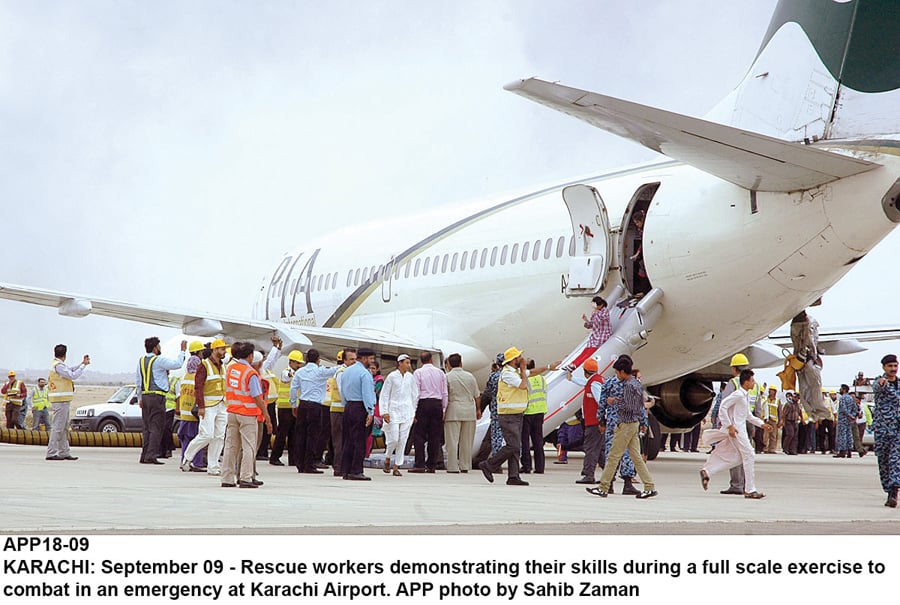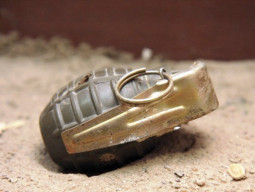
The emergency response exercise, organised by the Civil Aviation Authority (CAA) in compliance with international regulations, involved employees of multiple departments responsible for managing the airports as well as over a hundred volunteers.
The exercise started with a huge fire along 07 Runway, which faces Gulistan-e-Jauhar.
“We have a two-minute window to reach the site,” said Karachi Airport Manager Asghar Faheem Khattak, during a briefing ahead of the drill. “Unfortunately, we don't have a spare aircraft to create an entirely real simulation. So we test ourselves with an equally intense fire in an open space.”
No sooner had the fumes of black smoke started rising towards the sky, than the high-tech tenders rushed to the spot. It took less than three minutes for the two tenders to douse the fire.
At the same time, 147 people who had volunteered for the drill were evacuated from an aircraft. With fake blood (some volunteers claimed it was ketchup) dripping from their foreheads and hands, the passengers were carried by rescue workers on their backs down the stairs to where the ambulances were parked.
The aircraft that was used for the exercise was Pakistan International Airlines (PIA) Boeing 737, registered as AP-BCD - the same legendary plane, which was leased by Emirates in 1985 as one of the first two jets to start its operations.
While Edhi and Chippa volunteers had a field day, speeding and screeching their Suzuki ambulances on the wide open runway, the haphazardness of it all wasn't any different from the aftermath of any tragedy that the city has witnessed on so many occasions.
There were apparently too many rescue workers trying to take control of the situation. While a few actually carried or attended to the passengers, others were simply shouting or trying to give a hand where it was not needed, like the three rescue workers attempting to lift a six-year old.
Before the exercise, Airport Manager Khattak had said that 15 passengers would be on top priority, another 20 on second priority and around five will play dead.
On the ground, however, there appeared to be hardly any arrangement to deal with severely injured or burn victims. They were just whisked away in the ambulances.
Rescue workers faced embarrassing moments as well. One of the emergency chutes of the plane would not open. As passengers exited from the other, there were a dozen too many rescue workers trying to play their part.
Mumtaz Ali Soomro, the chief fire operator, took pains to explain what went wrong. “There was a little confusion due to the failure of the chute. The plane has been grounded for some time. Things like this happen even in a pre-planned event.”
Throughout the 30-minute drill, the 16 guards of the Airport Security Force (ASF) stationed around the aircraft stood their ground, not even budging an inch.
The drill, which takes place every two years, is part of the requirement of International Civil Aviation Organisation (ICAO). It deals with aircraft emergencies only.
But the most immediate threat to the airport and the incoming and outgoing flights comes from militants such as those who attacked Jinnah terminal in June, killing over two dozen people and leaving charred buildings in their wake.
Airport Manager Khattak says that aspect hasn't been ignored. “Since then, the security arrangements have been revised. New drills have been carried out but we can't share details with the media. You might see just one or two men at a picket but we have a whole team to back them up.”
Published in The Express Tribune, September 10th, 2014.





1731842248-0/Untitled-design-(21)1731842248-0-270x192.webp)











COMMENTS
Comments are moderated and generally will be posted if they are on-topic and not abusive.
For more information, please see our Comments FAQ